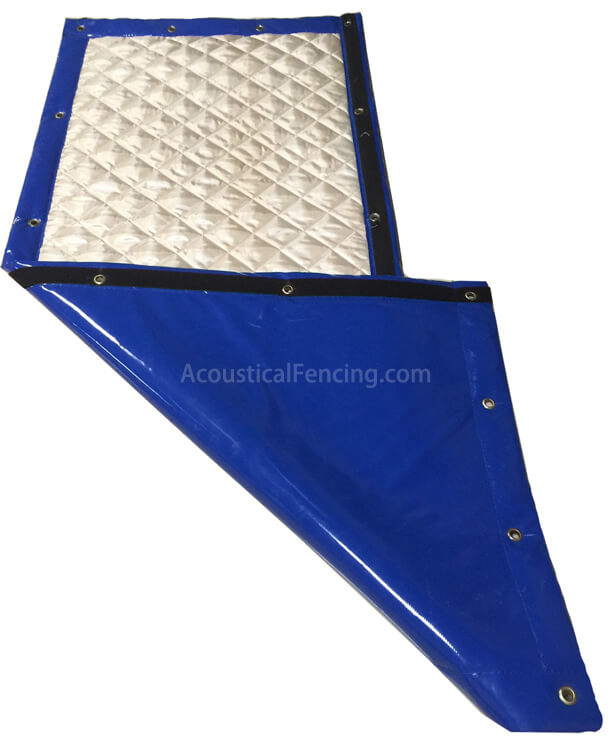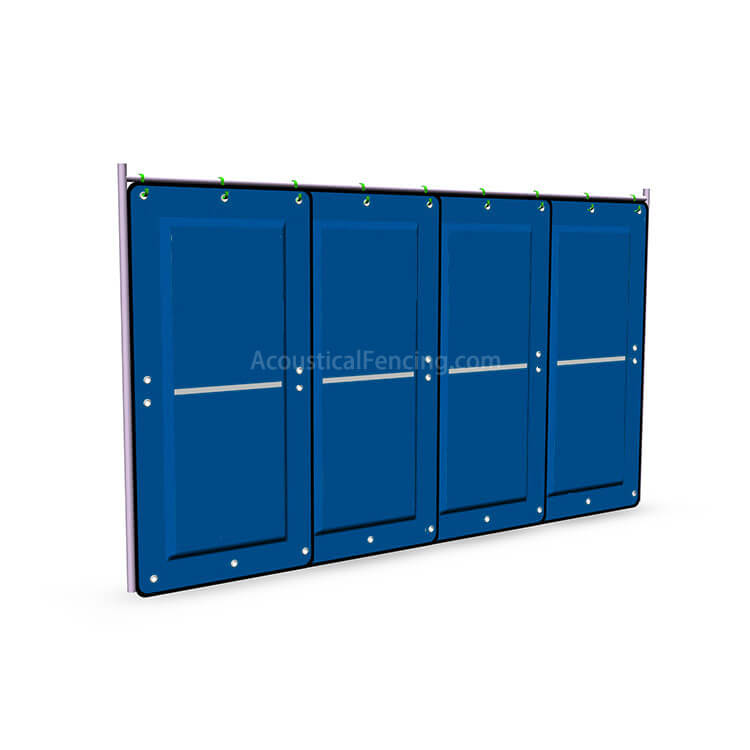I. Introduction
As construction projects involve noise pollution, temporary sound reduction fencing is an indispensable solution to help alleviate it and create a more peaceful work environment for employees involved in such endeavors. By acting as barriers between noise sources and receivers, these specially-designed fences serve to mitigate noise transmission, creating a quieter work space overall.
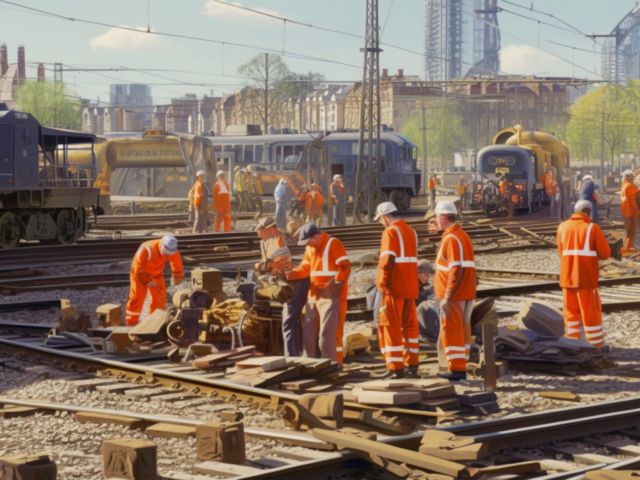
II. Understanding Sound Reducing Fencing
Sound reduction fencing (also referred to as acoustic fencing) is a specialized form of fencing made by temporary fencing manufacturers used to lessen noise transmission between construction sites, especially railway and subway projects, and nearby areas. Acoustic fencing systems such as this are widely employed at such construction sites in order to mitigate noise pollution issues that impact nearby neighborhoods.
How Sound Reducing Fences Work
Sound reduction fences employ various techniques to minimize noise transmission. One key feature is their construction using materials engineered specifically to absorb and reflect sound waves – effectively decreasing the amount of noise escaping construction sites.
Panels typically utilize materials with sound-absorbing properties, such as dense composite materials or specially designed acoustic panels, that help dissipate and dampen sound waves, keeping them within the construction area itself and preventing their travel beyond.
Additionally, sound reducing fences are usually constructed with minimal openings or gaps to further restrict sound transmission through them and ensure most noise generated from construction activities remains within the site, thus limiting disturbances to surrounding environments.
By employing fence for sound reduction, construction companies can significantly decrease noise pollution in nearby communities and promote more harmonious coexistence between construction activities and their surroundings.
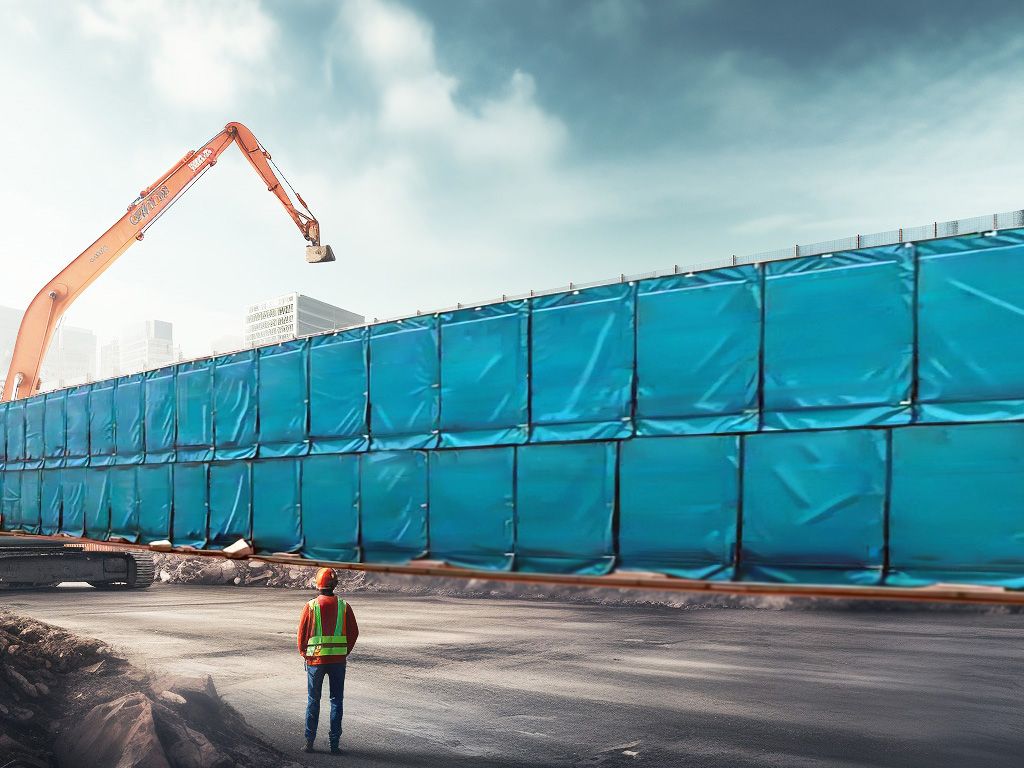
III. Types of Sound Reducing Fences
When it comes to sound reduction fencing, there are various types of products on the market – each offering their own set of benefits and features. Let’s take a look at a few options available here:
1. Sound Reducing Fence Barriers
Sound reducing fence barriers are designed to absorb and dampen sound waves for effective noise reduction. Made from materials with sound-absorbing properties like dense composite materials or special acoustic panels, such barriers provide an effective means of mitigating transmission of construction site noises.
2. Noise Reducing Acoustic Fencing
Noise-reducer fencing is an increasingly popular solution in construction projects where noise pollution is an issue. Constructed using materials engineered specifically to absorb and deflect sound waves, noise reducing acoustic fencing minimize transmission while also creating a quieter environment within their vicinity.
3. Temporary Movable Fencing Solutions
Temporary movable fencing allows construction projects greater flexibility by providing quick repositioning as work progresses. The sound reducing fence panels can quickly be set up and moved around as necessary – providing soundproofing benefits wherever they’re most needed on-site. The sound reduction fence panels are particularly helpful for railway and subway construction where work may span multiple sections at once.

4. Chain Link Temporary Fencing
Chain link temporary fencing provides a cost-effective and simple solution to reduce noise on construction sites. Crafted with interconnected metal links, these fences serve as sturdy barriers against noise within the work zone while being simple to set up and customize to the unique specifications of railway or subway construction projects.
As a commercial temporary fencing, it is an adaptable solution that can be utilized in various construction settings, including railway and subway projects. Specifically designed to withstand the rigorous conditions associated with construction sites while simultaneously providing effective sound reduction, these fences come in various heights to suit specific project needs and can even be customized accordingly.
5. Temporary Vinyl Fencing Options
Temporary vinyl fencing provides a durable and weather-resistant solution for sound reduction in construction sites. Constructed of high-grade vinyl materials, temporary patio fencing features excellent noise abatement properties while being easy to install, maintain, and reused on future projects.
By understanding the various types of sound reduction fences available, construction companies can select the one most suited to their project needs and achieve effective noise mitigation during railway and subway construction projects.
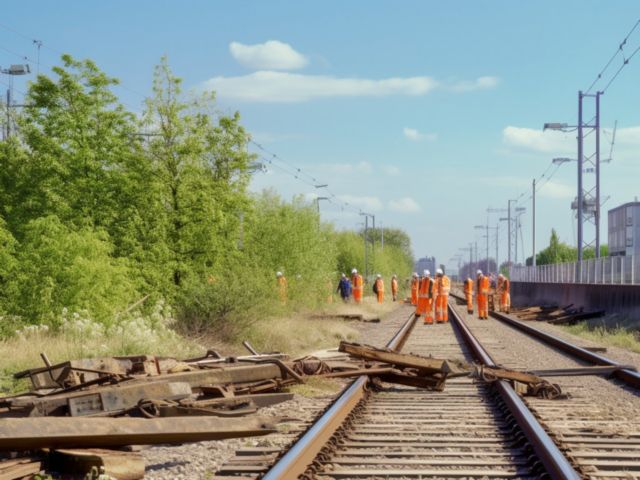
IV. Benefits of Temporary Sound Reduction Fencing
Temporary sound reduction fence offers many benefits when used on construction sites, particularly railway and subway projects. Here are a few advantages:
Noise Reduction Strategies for Nearby Residential Areas and Businesses
One of the primary advantages of attractive temporary fencing is its ability to reduce noise transmission into nearby residential and commercial areas. Construction sites can generate high levels of noise that disrupt and cause discomfort to those nearby; by installing sound reduction fencing, construction site noise pollution can be significantly decreased and thus creating a more peaceful environment in which to live or work.
Enhance Worker Safety and Productivity.
Construction sites can be inherently noisy environments, posing serious health and safety threats to workers. Excessive noise exposure can lead to hearing damage as well as other health complications. Temporary fencing barrier for heras fences acts as a barrier, reducing noise levels within a construction site – providing workers with better hearing protection as well as creating a more focused and productive working environment.
Comply With Noise Regulations and Standards
Noise regulations and standards have been put in place to ensure construction activities do not exceed acceptable noise levels, including temporary sound reduction barrier for security fence which effectively contains and lowers noise at construction sites. By adhering to such measures, construction companies can avoid potential legal issues as well as foster positive relationships with regulatory bodies and local communities.
Versatility and Ease of Setup/Removal
Temporary sound reduction barrier for mobile fence provides the added flexibility that comes with installation and removal. These fences can easily be assembled to suit specific railway and subway construction project requirements and adjusted as necessary as work progresses; as well as being relocated as necessary during their lifespan ensuring noise reduction benefits reach where they’re most needed. Once the project has concluded, all fencing materials can be efficiently disassembled for future reuse or repurposing.
V. Maintaining and Disassembling Temporary Sound Reduction Fencing
Besides temporary fencing installation, maintaining and cleaning temporary noise reduction barrier for brick fence properly is critical to its longevity and effectiveness. Here are some helpful guidelines for doing just that:
- Regular Inspections: Conduct routine inspections to detect any signs of damage or wear and replace damaged panels or components promptly in order to preserve the integrity of your sound reduction system.
- Cleaning: Regularly clean your fencing panels to remove dirt, dust, and any other debris that accumulates over time. Use mild detergents and water to do this gently without damaging any panels in any way.
- Repairs: As soon as any minor repairs, such as loose fasteners or damaged connectors arise, address them immediately in order to maintain structural stability and noise reduction capabilities of fencing systems.
- Disassembling and Storing: When it is time to disassemble the temporary sound reduction fencing, disassemble each panel carefully before storing them safely in a dry environment – this will ensure materials can be reused later for future projects, saving both time and resources in the process.
By following the proper maintenance practices, construction companies can maximize the lifespan and effectiveness of temporary sound reduction fencing used during railway and subway construction projects.
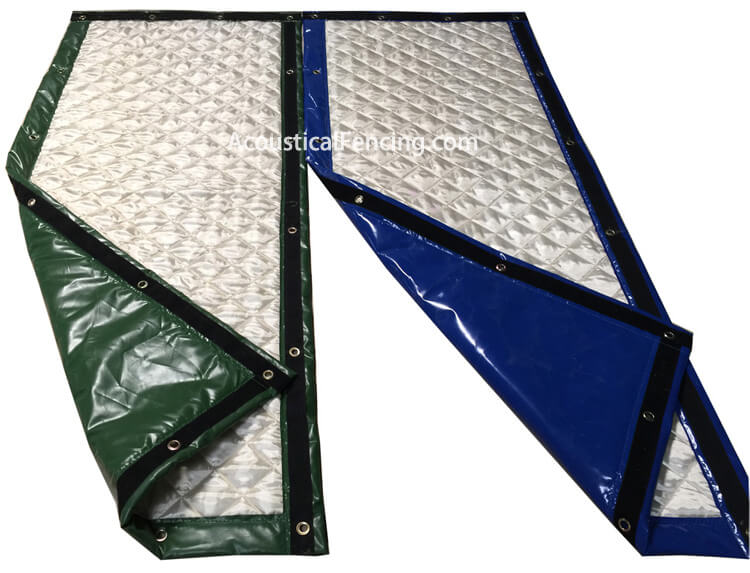
Acoustical Blankets 1250 x 2050 mm
Acoustical Blankets Temporary Acoustical Blanket Construction Sites
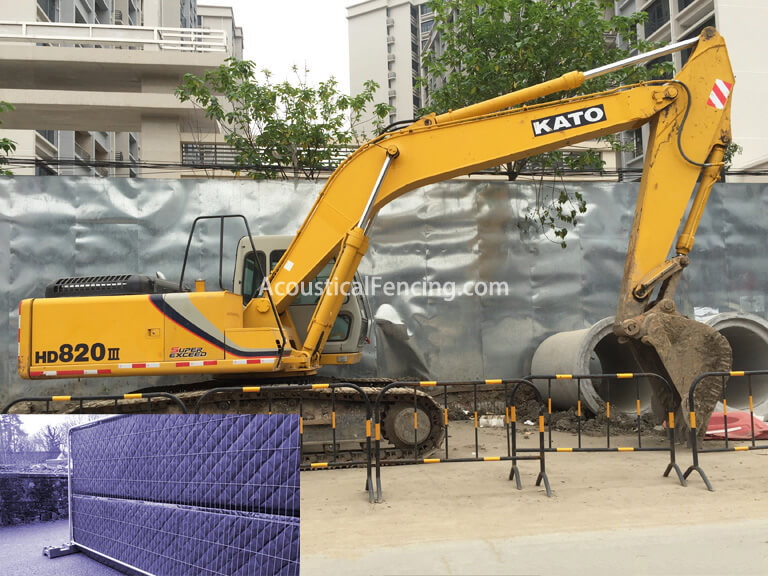
Construction Fencing 3550 x 2000 mm
Construction Fencing For Construction Noise Pollution Control Soundproof Wall
VI. Conclusion
Temporary sound reduction fencing from reliable temporary fencing manufacturer plays a vital role in mitigating noise pollution during railway and subway construction projects. By installing such fences, construction companies can effectively mitigate noise impacts on nearby residential areas and businesses thereby creating an atmosphere conducive to harmonious coexistence between construction activities and their immediate community.
Through this blog post, we have explored various types of sound reduction fencing available on the market today – such as sound-reducing fence panels and noise reduction acoustic fencing; temporary movable fencing; attractive temporary fencing; chain link temporary fencing; commercial temporary fencing and temporary vinyl fencing – each option providing flexibility and versatility when used for railway or subway construction projects.
As we have noted above, noise reduction sound proof fence offers many benefits for construction sites – noise reduction, increased worker safety and productivity, compliance with noise regulations and standards, ease of installation/removal as well as flexibility/ease of use for installers/remover are just a few benefits that highlight its significance in creating more conducive and safe working environments for both employees and local communities. These advantages highlight why sound-control measures must be implemented on construction sites in order to create more conducive work environments and foster respect between workers/local communities alike.
As you plan your construction projects, we suggest including sound enclosure for blender and temporary sound reduction barrier for fencing as part of your plans. Doing so will demonstrate your dedication to minimizing noise pollution while building positive relations with neighbors in the surrounding community. By investing in sound mitigation measures you can create more sustainable and responsible construction sites.
Temporary noise reduction fencing can be utilized not only during railway and subway construction projects but in a range of other scenarios as well. Focusing on noise reduction not only helps improve quality of life for nearby residents but also leads to more productive work environments.
Adopt temporary acoustic fencing to make an impactful statement about both your construction project and its benefit to local communities.

